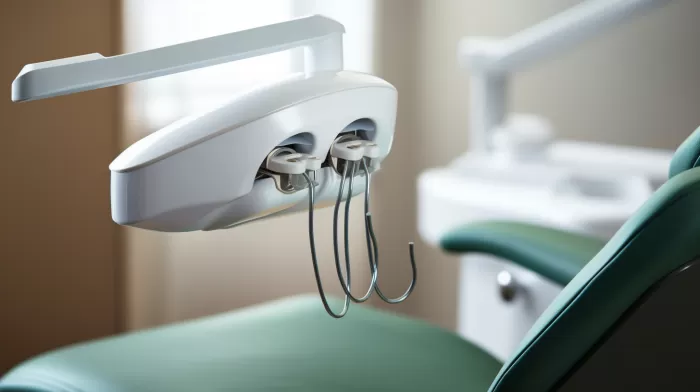You might think that everything at the dentist’s office is perfectly disinfected, but new research has shown that a pair of items you encounter in the dentist’s chair can potentially infect your mouth.
Bacterial Havens
A study conducted at Tufts University School of Dental Medicine and the Forsyth Institute reveals that a significant number of dental bib clips harbor troublesome bacteria from previous patients, dental clinicians, and the general dental office environment even after undergoing standard disinfection procedures.
Researcher Addy Alt-Holland states, “The study of bib clips from the hygiene clinic demonstrates that with the current disinfection protocol, specific aerobic and anaerobic bacteria can remain viable on the surfaces of bib clips immediately after disinfection.” Although actual transmission to patients was not demonstrated in the study, some bacteria can become opportunistic pathogens under the right conditions, which can pose a threat to susceptible patients or clinicians.
Study Results
The research outcome provides an interesting look into the bacterial presence before and after disinfection:
- Prior to disinfection, oral bacteria often linked with chronic and refractory periodontitis were found on 65 percent of the clips.
- Surprisingly, even after disinfection, 15 percent of the clips still had anaerobic Streptococcus bacteria from the oral cavity and upper respiratory tract. Additionally, five percent of the clips retained at least one type of bacteria from the Staphylococcus, Prevotella, and Neisseria species.
- Furthermore, 45 percent of the clips still carried at least one anaerobic bacterial isolate from skin after undergoing disinfection.
The Importance of Proper Disinfection
It’s crucial for dental practices to follow appropriate sterilization techniques, as infections can lead to critical health issues. Implementing practices like autoclaving, a process that uses steam under pressure to sterilize equipment, can be an excellent step towards maintaining a clean, safe environment for both patients and dental professionals. For more information on autoclaving, visit [OSAP].(https://www.osap.org/page/GuidelineAutoCl2Autoclave#.YMmC6zYzY2w)
Be Aware and Prepared
As a patient, knowing about possible hazards in a dental office can help you make informed decisions. Here are some actions that you can take to ensure a safe visit to your dentist:
- Ask about disinfection procedures: Don’t be afraid to inquire about the steps that your dental office takes to sterilize their equipment. This will not only give you peace of mind but also help you make better decisions when choosing a dental practice.
- Stay informed: Educate yourself about the standard disinfection protocols and what they entail. A valuable resource to consult is the American Dental Association as they can guide you with credible information.
- Report concerns: If you see something at your dental office that may pose a risk, such as a lack of proper disinfection practices or negligence, report your concerns to the dentist or the dental office manager.
- Practice good hygiene: It’s essential to maintain good oral hygiene before and after a dental visit, as this will minimize the risk of infection. Proper brushing and flossing, along with the use of mouthwash, can keep harmful bacteria at bay.
Conclusion
While this research highlights potential risks associated with dental office visits, it is essential to remember that dentists are professionals who prioritize the well-being and safety of their patients. Regular dental check-ups play a crucial role in maintaining overall oral health – don’t let the fear of infection deter you from visiting your dentist.
By staying informed and taking charge of your dental hygiene, you can minimize the risk of infections and enjoy a healthy, beautiful smile.



